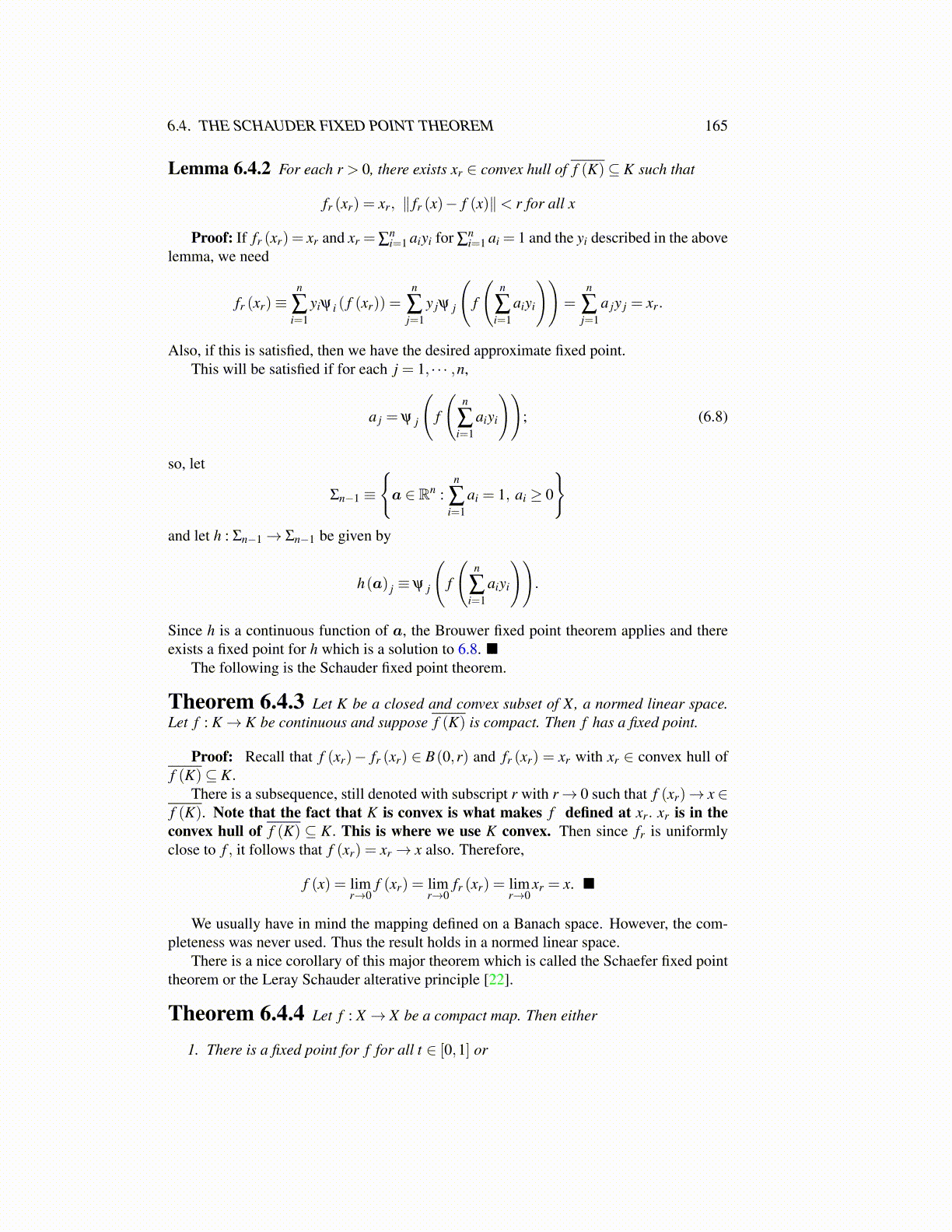
6.4. THE SCHAUDER FIXED POINT THEOREM 165
Lemma 6.4.2 For each r > 0, there exists xr ∈ convex hull of f (K)⊆ K such that
fr (xr) = xr, ∥ fr (x)− f (x)∥< r for all x
Proof: If fr (xr) = xr and xr = ∑ni=1 aiyi for ∑
ni=1 ai = 1 and the yi described in the above
lemma, we need
fr (xr)≡n
∑i=1
yiψ i ( f (xr)) =n
∑j=1
y jψ j
(f
(n
∑i=1
aiyi
))=
n
∑j=1
a jy j = xr.
Also, if this is satisfied, then we have the desired approximate fixed point.This will be satisfied if for each j = 1, · · · ,n,
a j = ψ j
(f
(n
∑i=1
aiyi
)); (6.8)
so, let
Σn−1 ≡
{a ∈ Rn :
n
∑i=1
ai = 1, ai ≥ 0
}and let h : Σn−1→ Σn−1 be given by
h(a) j ≡ ψ j
(f
(n
∑i=1
aiyi
)).
Since h is a continuous function of a, the Brouwer fixed point theorem applies and thereexists a fixed point for h which is a solution to 6.8. ■
The following is the Schauder fixed point theorem.
Theorem 6.4.3 Let K be a closed and convex subset of X, a normed linear space.Let f : K→ K be continuous and suppose f (K) is compact. Then f has a fixed point.
Proof: Recall that f (xr)− fr (xr) ∈ B(0,r) and fr (xr) = xr with xr ∈ convex hull off (K)⊆ K.
There is a subsequence, still denoted with subscript r with r→ 0 such that f (xr)→ x ∈f (K). Note that the fact that K is convex is what makes f defined at xr. xr is in theconvex hull of f (K) ⊆ K. This is where we use K convex. Then since fr is uniformlyclose to f , it follows that f (xr) = xr→ x also. Therefore,
f (x) = limr→0
f (xr) = limr→0
fr (xr) = limr→0
xr = x. ■
We usually have in mind the mapping defined on a Banach space. However, the com-pleteness was never used. Thus the result holds in a normed linear space.
There is a nice corollary of this major theorem which is called the Schaefer fixed pointtheorem or the Leray Schauder alterative principle [22].
Theorem 6.4.4 Let f : X → X be a compact map. Then either
1. There is a fixed point for f for all t ∈ [0,1] or